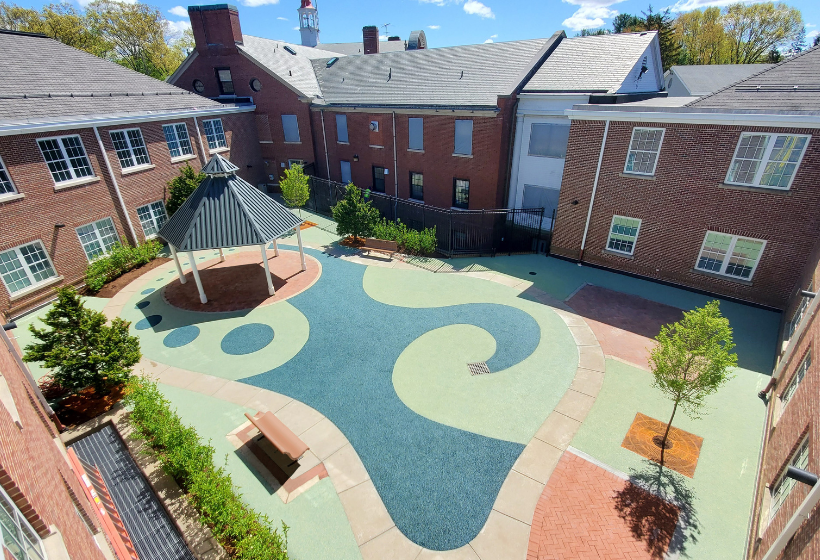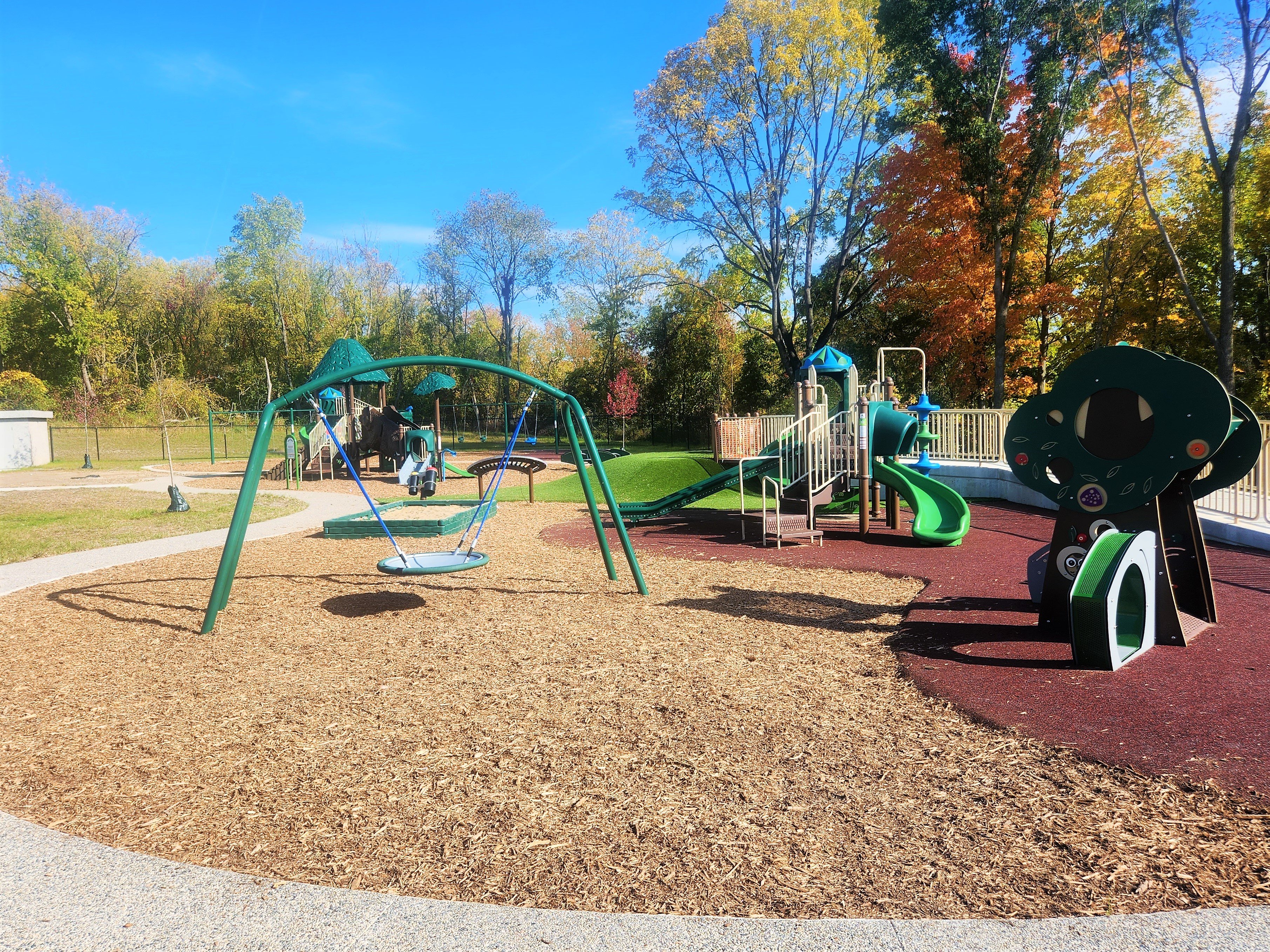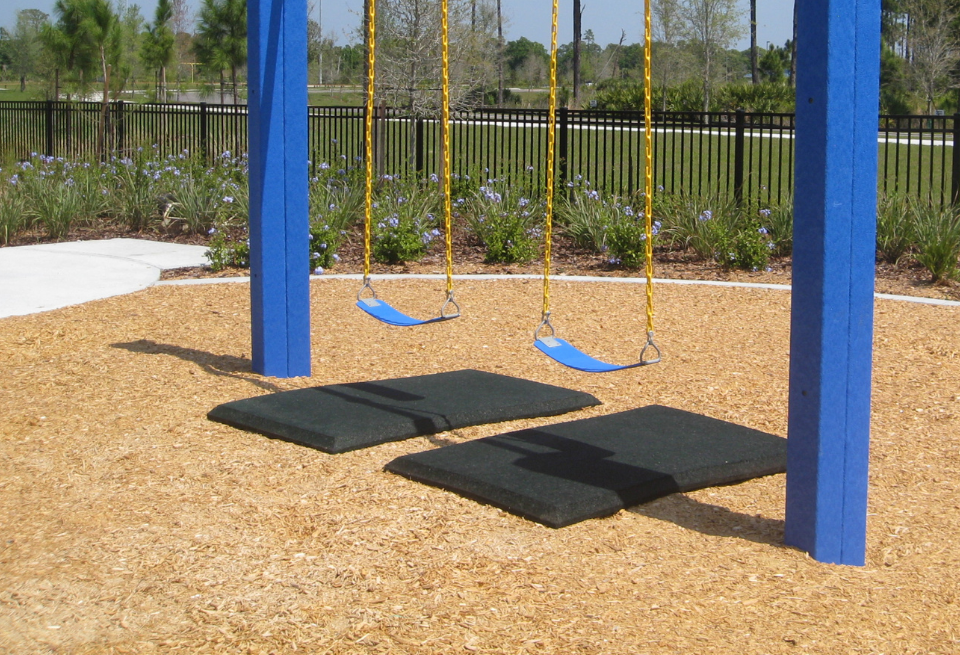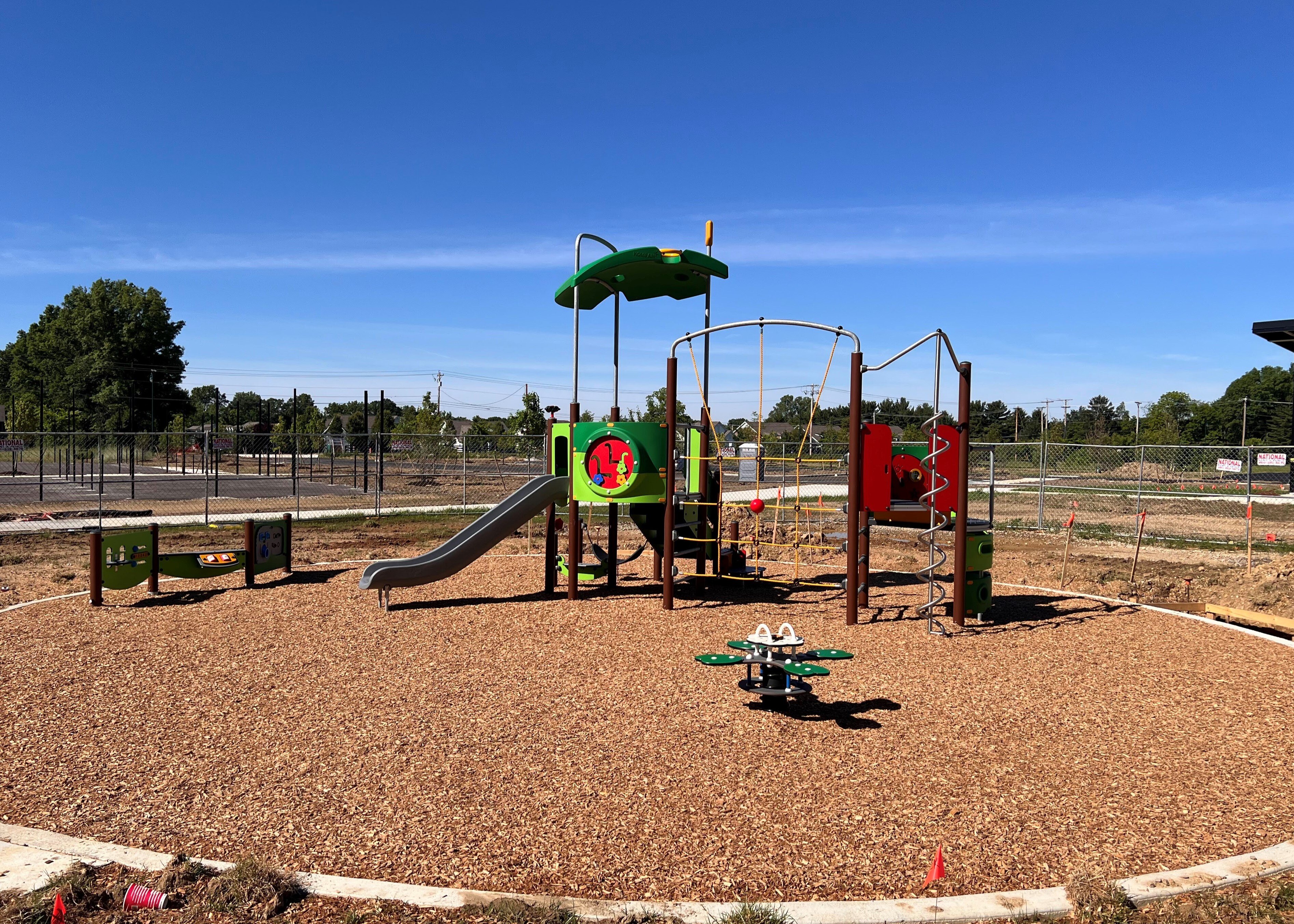When planning and designing a playground, it's easy to get swept up in the excitement of choosing the most accessible climbing equipment or the most intricate slide designs. As you sort through these major decisions regarding the most visible pieces of your playground, it may be easy to overlook the playground surfacing material. However, playground surfacing plays a critical role in the safety, functionality and appearance of your playground.
These are the top things to consider when choosing playground surfacing for your outdoor space:
Safety
Playgrounds are a space where children can play freely, learn how to socialize and get some much-needed fresh air and exercise. However, they also are one of the most common places for children to get injured. According to the National Program for Playground Safety, more than 70 percent of playground injuries result from falls on the playground. Often, the severity of those injuries depends heavily on the type of playground surfacing that has been installed.
There are certain surfaces that can result in significant and severe injuries, such as asphalt, dirt, concrete or cement. These playground surfacing materials should be avoided at all cost. Instead, you should focus on choosing surfacing materials that offer buoyancy and resistance, which can protect children when they fall and minimize the extent of their injuries.
In addition to considering the safest type of playground surfacing material, you also will want to consider the design of your overall equipment. The height of your equipment versus the playground surfacing that you choose will have an impact on the overall safety of your playground. For example, properly maintained loose fill typically scores the best on high fall heights. It is very important to take into account the fall height of the equipment and then choose playground surfacing that best complements the equipment design.
Budget
Price, naturally, plays a factor in the type of playground surfacing that you choose. As you create the budget for your playground, you will need to factor in the approximate costs of the equipment and installation, as well as the playground surfacing. For a frame of reference, playground design experts note that most playgrounds cost about $1,000 for every child that will be using it. As an example, a playground designed for a school of 100 children might cost about $100,000.
When comparing the initial costs of playground surfacing material, you also will want to consider the upkeep of the playground surfacing as well as the expected lifespan. In many cases, the less expensive playground surfacing material will require more refills and more upkeep over time, while a surfacing material with a higher initial cost may be more durable and last for a longer span of time.
Maintenance
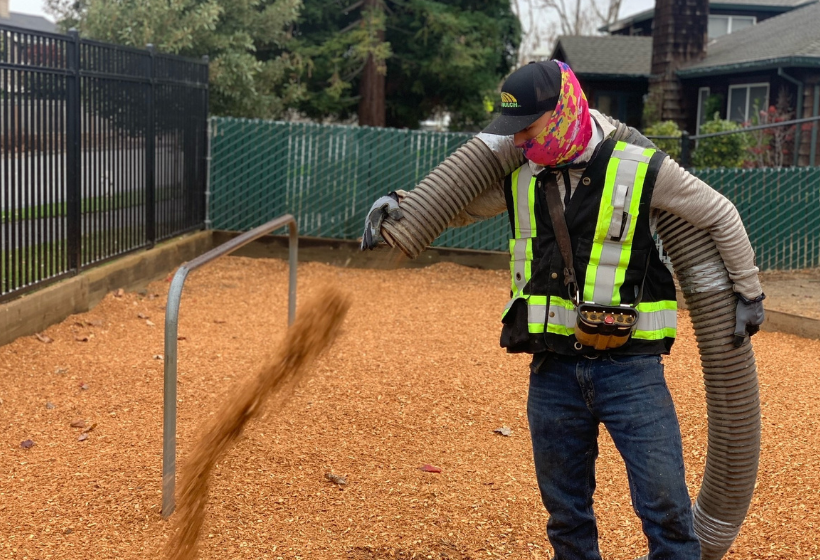
All playground surfacing requires routine maintenance in order to maximize its lifespan, but each type of material has different maintenance needs. It is important that you choose a surfacing material that you and your team will be able to easily maintain and update over the course of its lifespan so that you can get the most out of your investment.
These are the maintenance considerations that you need to be mindful of with the following playground surfacing options:
Engineered Wood Fiber
Engineered wood fiber is a loose-fill playground surfacing material that is becoming increasingly popular on playgrounds across the country. Its relatively low cost combined with added safety features makes it an excellent option that will last for many years. However, as a loose-fill playground surfacing material, there are other maintenance steps required.
To begin, engineered wood fiber will need to be topped off every few years in order to keep it in line with the safety height requirements. Throughout the season, your playground maintenance team should sift through the wood fiber in order to remove any debris, such as broken plastic, glass, face masks, rocks and large sticks.
If you are planning to purchase engineered wood fiber, you may want to invest in mats that can be installed that can protect the integrity of the engineered wood mulch in high-traffic areas.
Poured-in-Place Rubber
Poured-in-place rubber is an excellent playground surfacing material that is known for its colorful appearance and soft landings. As this is a manufactured playground surfacing material created with recycled rubber products, it is not as prone to decomposition or wear and tear as other surfacing materials. When properly maintained, this playground surfacing can last for between 10 and 15 years.
While its long lifespan is appealing, it's important to know that routine maintenance is still required in order to keep this surfacing material in excellent shape. Your playground maintenance team should routinely inspect the surface and remove all rock, mulch, sticks and other debris in order to protect the rubber. Sticky items such as gum, candy or other fluids should be removed with specialty cleaners. Bodily fluids also should be promptly removed in order to reduce the risk of surface contamination.
Rubber Mulch
Rubber mulch is very similar to engineered wood fiber in the sense that it is a loose-fill playground surfacing materials. It is an affordable and durable option that many playground designers consider using, and when maintained properly, it can last for many years to come.
Like engineered wood fiber, rubber mulch would need to be topped off on an ongoing basis, typically every two or three years. This must be done in order to adhere to all safety height requirements. In addition, the mulch should be routinely inspected for broken glass, old toys, large rocks, sticks and other bits of debris that could compromise the integrity of the rubber mulch as well as increase the risk of injury to those who are using the playground.
Mats can be used in high-traffic areas in order to reduce the loss of rubber mulch throughout the season, ultimately extending the lifespan of your investment.
Synthetic Turf
Synthetic turf is another playground surfacing option that playground designers love, because it looks as beautiful as real grass, and it makes for a soft landing spot for the young children who are at play. While it will not need to be watered or mowed like natural grass, there are maintenance considerations to keep in mind with synthetic turf.
Your maintenance crew should evaluate and inspect the synthetic turf on a regular basis. If there is any debris on the turf, such as leaves, rocks or sticks, a leaf blower can be used to safely and effectively remove the obstructions. Anything that may damage the turf itself, such as pet waste or bodily fluids, should be promptly cleaned with specialty products that are designed to protect the playground surfacing material.
Aesthetics
Finally, after you have considered the safety, cost and lifespan of your playground surfacing, you are going to want to choose the material that best complements the design and appearance of your playground. For some playground designers, they are searching for a bright and colorful surfacing material that will make the playground attractive and appealing to the young children who will be playing on it. Other designers, however, are more interested in a natural feel for their playground, and they want to find a playground surfacing material that will help the playground blend in with the environment. There is no right or wrong answer when it comes to the aesthetic of your playground, all you have to do is choose the playground surfacing that you feel will look best in your space.
Choose Fibar's Playground Surfacing
Fibar has grown to be one of the leading suppliers of playground surfaces in the U.S., with over 75,000 installations in North America. Along the way, the company has continued to strengthen its professional staff and has established a formal set of Fibar Values, emphasizing Integrity, Respect, and Customer Loyalty. Contact us today to learn more about our playground surfacing and get a quote for your playground.


